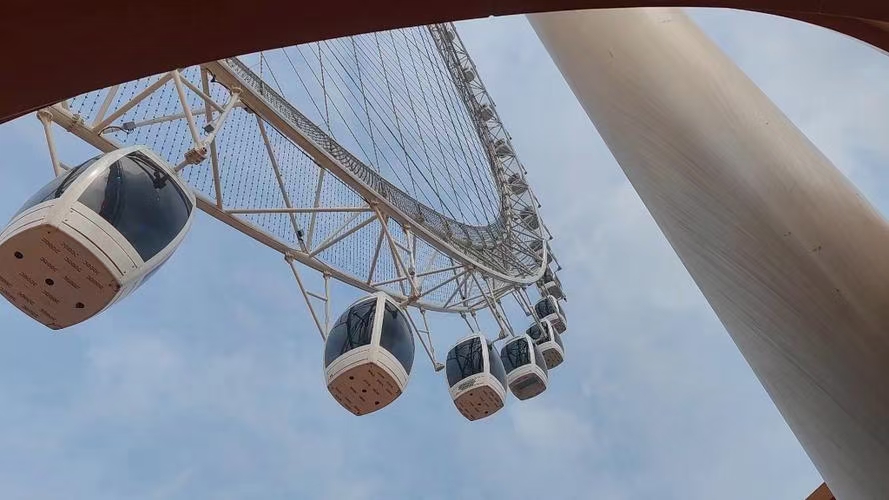- Albanian
- Arabic
- Belarusian
- Bengali
- Czech
- English
- French
- German
- Hebrew
- Hungarian
- Indonesian
- irish
- Italian
- Japanese
- kazakh
- Persian
- Russian
- Thai
- Uzbek
- Vietnamese
roller coaster cost
The Cost of Roller Coasters A Deep Dive
Roller coasters are a quintessential part of amusement parks around the world, drawing thrill-seekers with their towering heights, exhilarating drops, and intricate designs. However, behind the scenes, the development and maintenance of these iconic rides come with a hefty price tag. Understanding the cost of roller coasters provides insight into the amusement industry and the factors influencing these thrilling machines.
Initial Costs
The initial investment in a roller coaster can range dramatically based on its design, length, materials used, and technology. On average, costs can vary from a modest $1 million for smaller rides to over $25 million for world-class, large-scale coasters like the “Fury 325” at Carowinds in the United States, which reaches heights of 325 feet and speeds of up to 95 mph.
The two primary factors affecting the cost are the complexity of the design and the materials selected. Wooden coasters, while often cheaper, require continuous maintenance and can have a lower lifespan than steel coasters, which usually boast advanced technology and smoother rides. Companies may also opt for special features, such as inversions, special effects, or themed elements, which can further inflate costs.
Specialized design teams are vital for creating roller coasters. Companies like Bolliger & Mabillard and Intamin provide extensive engineering services that factor into the overall cost. Additionally, the construction phase involves heavy machinery, skilled labor, and safety inspections, all adding layers of expense.
Operational Costs
Once a roller coaster is operational, the expenses don't stop. Daily maintenance is crucial for safety and performance, with parks typically setting aside 10-15% of the initial cost annually for upkeep. This can include inspections, component replacements, and refurbishments. For example, a coaster that uses advanced technology, like magnetic launch systems, may incur higher maintenance costs due to the complexity of the equipment.
roller coaster cost

Insurance is another significant cost for amusement parks. The liability insurance for a roller coaster can be steep, reflecting the potential risks associated with operating high-speed rides. This insurance is essential for covering accidents or injuries that may occur, although rare, ensuring the safety of guests.
Operational costs also encompass staffing. Trained personnel must be on hand to manage the ride, ensuring smooth operation and safety compliance. Regular training and certification for operators are necessary, adding to overall staff expenses.
Return on Investment
Despite the high costs, roller coasters can be lucrative for amusement parks, drawing crowds and boosting ticket sales. A well-placed, thrilling coaster can significantly enhance a park's reputation, leading to increased visitor numbers. Parks often find that new additions can grow attendance by as much as 15% in their first year.
Moreover, roller coasters help to extend the operating season. Parks with significant attractions can attract visitors throughout the year, including special events during Halloween or summer nights. This potential for increased revenue explains why many parks are willing to invest heavily in new rides.
The Future of Roller Coasters
As technology advances, the future of roller coaster design promises even more thrilling experiences. Innovations like virtual reality, magnetic propulsion, and modular designs, which allow for easier relocation or refurbishment, are beginning to play a role in how coasters are conceived. However, with these advancements come new costs. As consumers expect more thrilling and complex experiences, investment in roller coasters may continue to rise.
In summary, the cost associated with roller coasters is multifaceted, encompassing initial design and construction as well as ongoing operational and maintenance expenses. The return on investment, while significant, relies heavily on how well a ride is marketed and how it fits into the overall experience the amusement park offers. As the industry evolves, parks will likely face challenges balancing costs with the demand for ever-more thrilling experiences, ensuring that roller coasters remain an essential part of the amusement landscape for years to come.
-
Flume Ride-Hebei Zhipao Amusement Equipment Manufacturing Co., Ltd.|Thrilling Water Attraction&Customizable DesignJul.30,2025
-
Flume Ride - Hebei Zhipao Amusement Equipment | Water Coaster, Thrilling DescentJul.30,2025
-
Flume Ride - Hebei Zhipao | Thrilling Water AttractionJul.30,2025
-
Flume Ride: Thrilling Water Attraction by Hebei Zhipao|Log Flume Manufacturers&Flume Ride DesignJul.30,2025
-
Flume Ride-Hebei Zhipao Amusement Equipment Manufacturing Co., Ltd.|Thrilling Water Coaster, Safe DesignJul.30,2025
-
Flume Ride-Hebei Zhipao Amusement Equipment Manufacturing Co., Ltd.|Thrilling Water Attraction, Safe DesignJul.30,2025
